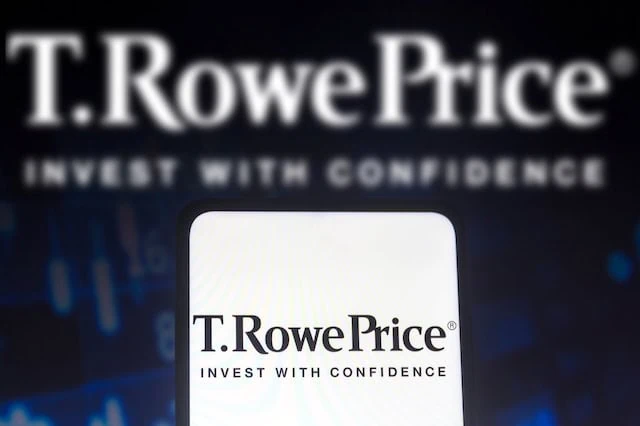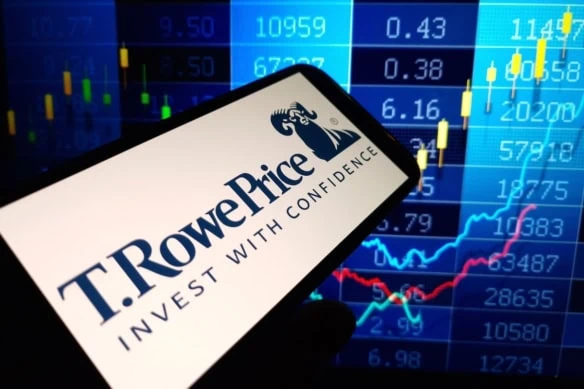T. Rowe Price has spent nearly 90 years building a reputation as a stalwart in wealth management and investment products. That work has been rewarded with $1.6 trillion in investor assets—much of which rests in the firm’s skillfully managed funds.
The keyword there is “managed.”
T. Rowe Price stands apart from many of its competitors because of its continued commitment and dedication to a human-centric approach to investing. While fund firms like Vanguard and BlackRock have aggressively built up product lineups controlled by rules-based indexes, the vast majority of T. Rowe Price’s offerings continue to offer portfolios hand-picked by human managers and analysis teams—just like they have been for decades.
If you’re not sure where to get started, I’m here to help. Read on as I explore some of the best T. Rowe Price mutual funds—a short list of core holdings that stand out for their strategic excellence and sound managerial judgment.
Disclaimer: This article does not constitute individualized investment advice. Securities, funds, and/or other investments appear for your consideration and not as personalized investment recommendations. Act at your own discretion.
Featured Financial Products
Why T. Rowe Price?

Thomas Rowe Price, Jr., founded his namesake company in 1937 as a wealth management firm. The firm launched its first mutual fund in 1950—and 75 years later, the company had exploded into a financial giant commanding well more than $1 trillion in assets, boasting nearly 8,000 associates worldwide, and offering more than 150 funds here in the U.S. alone.
That growth has come largely on the back of stellar managers—stars like former T. Rowe Price Health Sciences head Kris Jenner and current T. Rowe Price Capital Appreciation Manager David Giroux. But it’s also worth noting that while T. Rowe isn’t really known for skinflint fees, its expenses tend to be quite competitive, helping to attract investor money, too.
A few stats help tell the tale:
- More than 85% of T. Rowe Price funds charge expenses lower than the average price of comparable active funds in their Morningstar category.
- More than 90% of T. Rowe funds with a minimum 10-year track record beat their Lipper average for the period.
- T. Rowe Price funds beat comparable passive peer funds 71% of the time (measured in 10-year periods over the past 20 years), which is better than the average across all active managers (50%) and the five largest active managers (62%).
Put simply: T. Rowe offers productive, cost-effective investment products across numerous core and satellite strategies. And it does so while keeping human managers front and center.
How Were the Best T. Rowe Price Funds Selected?

T. Rowe Price boasts more than 150 mutual funds across a number of strategies—stock, bond, allocation, target-date, and more. That’s many, many more than any one investor would ever need, but given their generally high overall quality, whittling it down to a few select choices isn’t exactly easy.
I’ve started with a quality screen, singling out T. Rowe funds that have earned the top Morningstar Medalist rating of Gold. Whereas Morningstar’s Star ratings are based upon past performance data, Morningstar Medalist ratings are a forward-looking analytical view of a fund. Per Morningstar:
“For actively managed funds, the top three ratings of Gold, Silver, and Bronze all indicate that our analysts expect the rated investment vehicle to produce positive alpha relative to its Morningstar Category index over the long term, meaning a period of at least five years. For passive strategies, the same ratings indicate that we expect the fund to deliver alpha relative to its Morningstar Category index that is above the lesser of the category median or zero over the long term.”
A Medalist rating doesn’t mean Morningstar is necessarily bullish on the underlying asset class or categorization. It’s merely an expression of confidence in the fund compared to its peers.
Unlike some of the other big-name fund providers, T. Rowe Price hasn’t made a name for itself by pushing fees to the floor. So I’ve limited the list to T. Rowe mutual funds with costs that are at least considered average within their category, if not below average. From the remaining universe of several dozen funds, I selected a range of products that address various core portfolio goals, have good-to-great track records, and are generally accessible to most investors (reasonable investment minimums, can be bought in most accounts).
Note: Mutual funds selected for 2025 all had Gold Medalist ratings at the beginning of 2025. Funds will remain on the list throughout 2025 as long as they maintain a minimum of Silver. Funds that fall below that threshold will be replaced.
Related: 13 Dividend Kings for Royally Resilient Income
The Best T. Rowe Price Mutual Funds to Buy
Below are seven great T. Rowe Price funds best suited as core portfolio holdings.
All of the T. Rowe Price funds listed here have a $2,500 minimum initial investment unless otherwise indicated (after that, additional purchase minimums are just $100) and are open to new investors.
If you purchase these funds within an IRA, you can typically do so at smaller minimums, often just $1,000. And if any of these T. Rowe Price funds are available in your 401(k), you can buy them with no investment minimum.
Also worth noting: Every one of these funds is actively managed. While T. Rowe does have a solid lineup of index funds, managed funds earn an overwhelming majority of the firm’s Morningstar Gold Medalist ratings.
In no particular order …
1. T. Rowe Price All-Cap Opportunities Fund

- Style: U.S. all-cap growth stock
- Assets under management: $17.3 billion
- Dividend yield: 0.1%
- Expense ratio: 0.79%, or $7.90 per year for every $1,000 invested
I’d normally start this list with either an S&P 500 index fund or a standard U.S. large-cap blend fund that would act as a portfolio core.
However, no T. Rowe Price fund meeting that description made the cut … so let’s jump right to the fun stuff!
T. Rowe Price All-Cap Opportunities Fund (PRWAX) is a growth-stock fund that doesn’t discriminate by size—it’s happy to hold small-, mid-, and large-cap stocks as long as they exhibit the qualities desired by manager Justin White, who has been with the fund since 2016. Those traits include earnings growth beyond the average of the Russell 3000 Index, favorable company fundamentals, effective management, and reasonable stock valuations.
Well, PRWAX might be open to companies of all sizes, but it clearly has favorites. Management has 75% of assets invested in large-cap stocks, with another 12% in mids and the remainder in smalls. Nothing odd there. White is content to hold just about 100 to 115 stocks, and with more than $17 billion to work with, he wouldn’t want to move the market in smaller companies by funneling too much of his assets.
Top holdings give us plenty of what we’d see out of a typical large-cap fund—Nvidia (NVDA), Microsoft (MSFT), Apple (AAPL) and other “Magnificent 7” stocks all feature prominently in the portfolio. Technology earns the greatest weight at 35%, which is only a couple percentage points more than what you’d see out of similarly built funds. The remaining assets are heavily tilted toward cyclical sectors, while defensive areas like staples and utilities have low-single-digit weights.
“Few managers have been able to stay competitive with the Russell 1000 Growth Index over a meaningful period, but Justin White is one of them. In the process of compiling one of the better track records in the category since 2016, he’s demonstrated great stock selection and an eagle eye for avoiding big losses,” says Adam Sabban, senior analyst at Morningstar. “He’s navigated some of the most volatile periods well, such as 2020, while also delivering value during calmer times.”
The fund started the year with a Gold Medalist rating but was recently reduced to Silver. Sabban says that’s no reason to fret. “A drop in the Morningstar Medalist Rating of some share classes isn’t attributable to reduced conviction in the strategy’s People or Process ratings but instead reflects a change in the way Morningstar calculates the excess return opportunity for funds,” he writes.
PRWAX is no index fund, and it’s not priced like one—though at 0.79% annually, it’s right at the large-cap category average. But it has beaten the category average over all medium- and long-term time periods, and is in the top 15% of funds over the trailing 10 and 15 years. That’s plenty good enough to land All-Cap Opportunities on our list of the best T. Rowe Price funds you can buy.
Want to learn more about PRWAX? Check out the T. Rowe Price provider site.
Do you want to get serious about saving and planning for retirement? Sign up for Retire With Riley, Young and the Invested’s free retirement planning newsletter.
Related: The 10 Best Fidelity Funds to Buy
2. T. Rowe Price Dividend Growth Fund

- Style: U.S. large-cap dividend-growth stock
- Assets under management: $24.3 billion
- Dividend yield: 0.9%
- Expense ratio: 0.64%, or $6.40 per year for every $1,000 invested
If you see a fund with “dividend” in its name and assume it’s trying to deliver a superior dividend yield, chances are you’ll be right more often than you’ll be wrong. But that’s not the case with T. Rowe Price Dividend Growth Fund (PRDGX).
PRDGX is a dividend-growth fund. This kind of strategy involves owning companies that regularly improve their payouts over time, which accomplishes a couple of things. For one, while it might not score you high current yield, it can generate a higher “yield on cost” down the road. Yield on cost is what you’re actually earning based on the price at which you bought the stock. (Example: A $100 stock paying $1 in annual dividends yields 1%. But because you bought the stock at $50, your yield on cost is 2%.)
Also, dividend-growth stocks tend to be high-quality equities. After all, you can’t sustainably increase how much cash you’re shelling out to shareholders if you’re unable to turn a profit—you need strong financials and excellent cash flows. So dividend growth is often considered a quality screen of sorts that ensures the fund owns a higher grade of company.
That’s what you get with PRDGX. “Manager Tom Huber focuses on financially healthy companies that can sustain above-average payout growth as he believes dividend growers offer outperformance with lower volatility,” says Morningstar Analyst Stephen Welch. The fund’s 95-stock portfolio, which is almost entirely made up of U.S. stocks, is full of serial dividend raisers like Visa (V), Walmart (WMT), and Chubb (CB).
Specifically, Huber is tasked with building a portfolio of companies “that have a strong track record of paying dividends or that are expected to increase their dividends over time.” I emphasize “or” because it’s … well, different.
Many dividend-growth index funds are required, thanks to the rules that govern the index, to own companies that have improved their payouts without interruption for some set period of time. That’s not the case with T. Rowe Price Dividend Growth. Huber has full discretion here. For instance, holding Ross Stores (ROST) actually suspended its distribution for a few quarters in 2020—and was booted from the Dividend Aristocrats as a result. However, it resumed payouts in 2021 at its previous level and has raised each year since then, so it’s certainly a dividend grower once more.
The actively managed T. Rowe Price Dividend Growth ETF (TDVG) offers similar exposure and charges 0.50% annually.
Want to learn more about PRDGX? Check out the T. Rowe Price provider site.
3. T. Rowe Price Financial Services

- Style: U.S. sector (Financials)
- Assets under management: $2.1 billion
- Dividend yield: 1.0%
- Expense ratio: 0.93%*, or $9.30 per year for every $1,000 invested
T. Rowe Price Financial Services (PRISX) stands out among these top T. Rowe Funds in that it’s not a core holding—this is very much a “satellite” position you would use to either bolster your long-term, buy-and-hold exposure to financial services firms, or to make targeted bets on the sector.
Portfolio Managers Matt Snowling and Greg Locraft have built a portfolio of 100 financial services companies, spanning banks, payments processors, insurers, and capital markets firms, among other types of businesses. Top holdings at the moment include names such as Bank of America (BAC), Mastercard (MA), Charles Schwab (SCHW), and Capital One Financial (COF).
Why invest in the financial sector? Typically two reasons:
- Cyclicality: Banks and other financial services firms are among some of the best bets you can make if you believe the U.S. economy is bound to go on a tear. In general, as consumer confidence and spending perk up, so too do these businesses. (Naturally, the opposite is true—an economic downturn can weigh on PRISX.)
- Dividends: Financial companies don’t have quite the dividend reputation of sectors such as utilities and real estate, but some of them are quite generous payers.
T. Rowe Price Financial Services is more a play on the former than the latter—while it’s primarily invested in large-cap stocks, it leans a little smaller, with an average market cap of about $75 billion compared to a category average of around $78 billion. It yields a little less than the financial sector average, too, but it also has produced superior returns across every meaningful time period. Indeed, the currently Silver-rated fund falls within the top 11% (or better) of category funds for the trailing five-, 10-, and 15-year periods.
* 0.94% gross expense ratio is reduced with a 1-basis-point fee waiver until at least Feb. 28, 2027.
Want to learn more about PRISX? Check out the T. Rowe Price provider site.
Related: The 9 Best Schwab Funds to Buy
Featured Financial Products
Related: The 10 Best Vanguard Funds to Buy for the Everyday Investor
4. T. Rowe Price Global Stock Fund

- Style: Global large-cap growth stock
- Assets under management: $7.3 billion
- Dividend yield: 0.1%
- Expense ratio: 0.80%, or $8.00 per year for every $1,000 invested
The U.S. has been one of the world’s most fruitful stock markets for decades. So if you believe in the American economy’s ability to keep growing, naturally, you should continue to invest the lion’s share of your money in U.S. assets.
Still, many advisors will tell you it’s important to diversify geographically, too—a little hedging of bets, sure, but also, there are hundreds of high-achieving companies scattered across the globe, and it makes sense to have a little exposure to those firms, too.
You can get the best of both worlds with the T. Rowe Price Global Stock Fund (PRGSX).
An important note about fund terminology. The word “international” in a fund’s name implies its holdings come from anywhere but America. However, the word “global” implies that the fund holds both U.S. and international stocks. PRGSX is the latter. This 120-stock portfolio, which is overwhelmingly large-cap in nature and has a clear bent toward growth stocks, is split roughly 60% domestic/40% foreign. The international portion of the portfolio is most heavily tilted toward the U.K., Taiwan, Japan, and the Netherlands right now. Top 10 holdings are thick in U.S. stocks, but Unilever (UL), Taiwan Semiconductor (TSM), and Tencent (TCEHY) make the cut for the away team.
Manager David Eiswert and his team of global analysts home in on companies capable of generating above-average earnings growth over time.
“Many investment managers prefer a stable market environment, but this strategy’s skipper is always on the hunt for change,” Morningstar’s Sabban says. “Manager David Eiswert has built a great track record on the back of strong stock selection, timely trades, and the mental flexibility to pivot away from profitable trends before they sour.”
Even at its worst, PRGSX still tends to top the category average. But when it shines—which it does over most medium- and long-term time frames—it’s not just one of the best T. Rowe Price mutual funds you can buy, but one of the best funds period.
Want to learn more about PRGSX? Check out the T. Rowe Price provider site.
Do you want to get serious about saving and planning for retirement? Sign up for Retire With Riley, Young and the Invested’s free retirement planning newsletter.
Related: The 9 Best Fidelity Index Funds to Buy
5. T. Rowe Price Short Duration Income Fund

- Style: Short-term bond
- Assets under management: $115.2 million
- SEC yield: 4.5%*
- Expense ratio: 0.40%**, or $4.00 per year for every $1,000 invested
Most investors will want some exposure to bonds—debt issued by governments, companies, and other entities that pay interest to bondholders. But how much will largely depend on your age.
Bonds tend to be much less volatile than stocks, for better or worse; it limits downside, yes, but it also limits upside. Instead, most of the return from bonds comes from the steady stream of interest income they produce. They’re not great for generating wealth, which is your prime concern when you’re younger, but they’re outstanding for protecting wealth, which becomes increasingly pivotal as you age.
However, it’s tough to go out and buy, say, a single bond. Data and research on individual issues is much thinner than it is for publicly traded stocks, plus, some bonds have minimum investments in the tens of thousands of dollars. So, your best (and most economical) bet is to buy a bond fund, which can provide you with access to hundreds if not thousands of bonds.
T. Rowe Price Short Duration Income Fund (TSDLX) is a particularly defensive bond fund. Portfolio co-managers Cheryl Mickel and Steven Kohlenstein invest in a variety of short-duration fixed-income issues, including corporate bonds, asset-backed securities (ABSes), U.S. Treasury bonds, mortgage-backed securities (MBSes), commercial MBSes (CMBSes), and other government-related debt. It’s largely U.S.-centric, but not entirely—a little more than 15% of assets are invested in issues from the U.K., Canada, Germany, South Korea, and a handful of other countries.
Maturities are overwhelmingly on the short side, with nearly 75% of bonds expiring in three years or less. That contributes to an extremely low duration (a measure of interest-rate risk). Right now, TSDLX’s average duration is a lean 1.7 years, implying that a 1-percentage-point hike in interest rates would result in a short-term loss of just 1.7%—but conversely, a 1-percentage-point decline in rates would result in a modest gain for the fund.
A long way of saying: TSDLX is about limiting volatility and collecting income. Indeed, the yield, at well more than 5% right now, is substantial for such relatively low risk.
* SEC yield reflects the interest earned across the most recent 30-day period. This is a standard measure for funds holding bonds and preferred stocks.
** 0.88% gross expense ratio is reduced with a 48-basis-point fee waiver until at least July 31, 2027.
Want to learn more about TSDLX? Check out the T. Rowe Price provider site.
Related: The 7 Best Schwab Index Funds to Buy
6. T. Rowe Price Balanced Fund

- Style: Moderate allocation
- Assets under management: $5.0 billion
- Dividend yield: 1.9%
- Expense ratio: 0.60%, or $6.00 per year for every $1,000 invested*
If you want a simpler portfolio solution that covers multiple assets in a single fund, you might want to look for an “allocation fund” (aka “balanced fund,” aka “portfolio in a can”), which invests in both stocks and bonds … and occasionally other assets as well.
Naturally, different investors will want different blends of stocks and bonds. “Moderate” allocation funds, for instance, will have 50% to 70% of assets invested in stocks, with the rest in fixed income and cash.
T. Rowe Price Balanced Fund (RPBAX) managers Charles Shriver, Christina Noonan, and Toby Thompson aim for a 65/35 blend of stocks and bonds.
It holds individual stocks and bonds, sure—holdings include the likes of Nvidia, Microsoft, and Amazon (AMZN), as well as U.S. Treasury bonds. But it also holds agency debt, municipal bonds, corporate debt, and even a few of T. Rowe’s bond funds. And its top holding right now is T. Rowe Price Real Assets Fund I Shares (PRAFX), which holds companies that deal in “real assets” like real estate and metals—in other words, real estate investment trusts (REITs), mining companies, and other firms.
“T. Rowe Price Balanced is steered by veteran multi-asset portfolio managers backed by a deep team,” Morningstar Senior Analyst Greg Carlson says. “The fund’s portfolio is simple yet well-diversified, and the managers of its underlying strategies are largely proven and benefit from substantial resources as well.”
Performance has largely been good across its history; RPBAX has beaten its category average over every meaningful time frame, and its index over most (but not all) periods.
* RPBAX will permanently waive a portion of its management fee to offset any acquired fund fees and expenses related to investments in other T. Rowe Price mutual funds. Currently, the 0.65% gross expense ratio is reduced with a 5-basis-point fee waiver.
Want to learn more about RPBAX? Check out the T. Rowe Price provider site.
Featured Financial Products
Related: 10 Monthly Dividend Stocks for Frequent, Regular Income
7. T. Rowe Price Capital Appreciation

- Style: Moderate allocation
- Assets under management: $70.6 billion
- Dividend yield: 2.0%
- Expense ratio: 0.71%*, or $7.10 per year for every $1,000 invested
T. Rowe Price Capital Appreciation (PRWCX) comes at the tail end of this list—very much out of order—because of its status. Specifically, PRWCX is closed to most new investors. This is very much an exception to the rules I laid out above. However, I’m still including it among the best mutual funds you can buy both because of its extremely high quality and because this T. Rowe fund still might be available to some investors via select registered investment advisory (RIA) firms.
T. Rowe Price Capital Appreciation is another allocation fund—this one designed to invest at least half its assets in stocks, with the rest socked into various debt securities, including corporate bonds, government debt (Treasuries, MBSes, asset-backed securities), and bank loans. It’s primarily a domestic fund, but it can hold at least a quarter of its assets in foreign equities and debt. PRWCX, which currently owns around 170 securities, places 60% of assets in domestic equities and a little more than 35% in domestic debt, sprinkling the rest around foreign bonds, foreign stock, preferred stock, convertible securities, and cash.
Morningstar Analyst Jason Kephart calls David Giroux, who has managed the fund since June 2006, “a manager unlike any other.”
“He’s displayed an innate ability to opportunistically invest across both equities and bonds, capturing pockets of value through strong stock selection and impressively timed shifts between stock and bond exposure,” Kephart says. “His execution of this strategy’s nimble, contrarian approach has delivered top-notch returns for its investors.”
During his tenure, Giroux has beaten all of his category peers on both an absolute and risk-adjusted basis. He has also bested all peers over the trailing 10- and 15-year periods, and has beaten 96% of them over the trailing five years.
T. Rowe Price Capital Appreciation’s only sticking point is a critical one—availability. It’s largely closed, so most of us can’t just log into our browsers and buy this fund. But again, if your money is managed through certain RIAs, you might actually be able to buy shares of this gem.
* 0.74% gross expense ratio is reduced with a 3-basis-point fee waiver until at least April 30, 2026.
Want to learn more about PRWCX? Check out the T. Rowe Price provider site.
Want to talk more about your financial goals or concerns? Our services include comprehensive financial planning, investment management, estate planning, taxes, and more! Schedule a call with Riley to discuss what you need, and what we can do for you.





![10 Best Investments for Roth IRA Accounts [Tax-Smart Growth] 22 best investments for roth ira](https://youngandtheinvested.com/wp-content/uploads/best-investments-for-roth-ira.webp)
![How to Use Your HSA for Retirement [Tax-Efficient Investing Tool] 23 how to use your HSA in retirement](https://youngandtheinvested.com/wp-content/uploads/how-to-use-your-hsa-in-retirement-600x403.png.webp)

